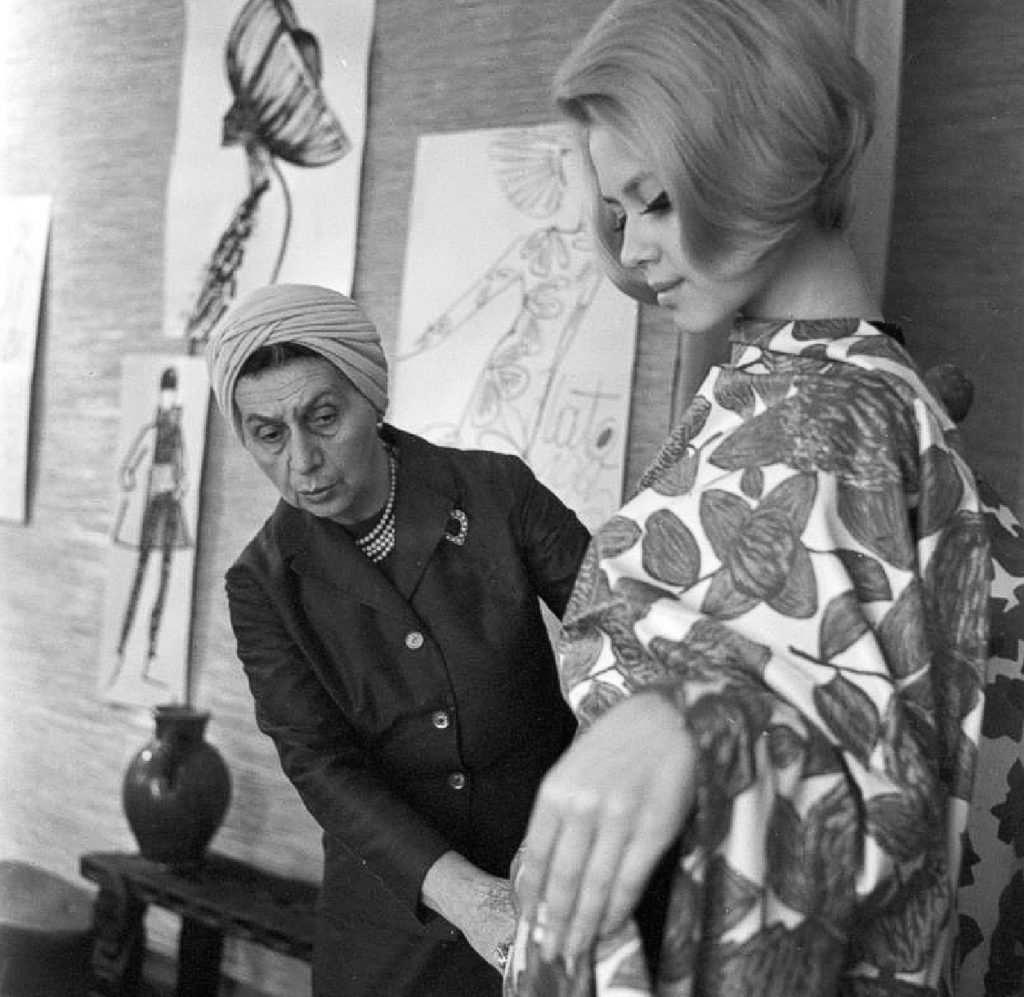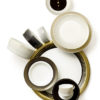Till the 60s of the former century Polish fashion elite was led by a small lady equipped with a great intellect, passion for aesthetics, taste – Jadwiga Grabowska.

Does elegance equal intelligence?Whenever I mentioned fashion of the Polish People’s Republic while talking to my mother or grandmother, I always heard the same comments – the clothes were difficult to find, one had to stood in the queue for shoes for hours and then ended up buying a pair in the wrong size. Nevertheless, in the face of dramatic shortages of supply, focusing on the mismatched size of a piece of garment would be idiocy. The image of the Polish fashion of that period, which I created based on similar stories, was, euphemistically speaking, not very encouraging. First and foremost I created the image of ubiquitous pinchbeck (the situation was sometimes alleviated thanks to clothes made by a befriended dressmaker or home-made clothes), it expected it must have been hopeless. As I am in love with the fashion of the 1920s and 30s, I treated People’s Poland less favorably, often depriving the clothes from the period the right to be elegant. My judgments were extremely superficial and unjust but I learnt about it later when I came across the biography of an inconspicuous but unusual woman.
She was born in 1898. Grabowska was the daughter of a prosperous construction entrepreneur, Stanisław Seydenbeutel. Her mother’s brother, Edward Eber, was a significant pre-war architect who designed luxury tenement houses at Three Crosses Square and the well known Adria building. Jadwiga Seydenbeutel, who was to become a fashion creator, grew up surrounded by wealth. She received a thorough education, even before the war she had traveled to Paris where she had the opportunity to observe the latest trends. At that time, Chanel and her revolutionary designs were dominating the fashion world. The taste of Grabowska was influenced by the best models; at that time she worked out the rules of style she used to honor throughout her life.
She launched the Fashion Salon Feniks in demolished Warsaw. The designer fought to bring the city back to life by “rebuilding Polish women”. Fashion was supposed to be a substitute for normality, allowing the public to forget about the loss and pain at least for a short while. Grabowska treated her collections in a similar “missionary-like” manner when she took up the position of the artistic director in Moda Polska, the company founded in 1958. At that time she focused primarily on educating Polish women in the field of style. She did not design large collections for common people. She created fashion purposed for the elite, based on Western patterns. She attended the Parisian designers show, she knew Chanel personally. She dressed up the wives of party officials, she taught them manners. She also attached great significance to education and life of her models.
She perceived them as the representatives of Moda Polska. Beautiful, well-dressed girls certainly stood out in the crowds wandering on the streets of communist Warsaw. The label of Moda Polska guaranteed quality. Pieces of clothing were well tailored. The attention to detail serves as a convenient indicator of the Polish light industry condition. This does not mean, however, that the notables did accept Grabowska’s ideas without any reservations. Her stubbornness, the willpower and attained position resulted in her being granted the permission to leave for a fashion show in western Europe or obtaining a promise of producing the fabric she needed. When I look at the photos of the collections released by Moda Polska, I cannot help myself from stating that the efforts of the Polish creator did not go to waste.
Certainly many factors contributed to the success of Grabowska. The personality, extraordinary organizational skills and dedication to work were of great significance. Nevertheless, the aesthetic value of the clothes created by this artist had priority. The functionality of the individual garments is noticeable straight away. According to Polish Chanel (as Grabowska was called) this feature of a costume constituted an indispensable component of elegance. What is more, the collections designed in her studio were inspired by classic designs – even a careful observer would not refer to them as extravagant. It was not the most important feature, though. It was a game with a higher stake. Beauty was the objective. If it was to be the essence of the artist’s creativity, it would not be an exaggeration to state that Grabowska’s work indeed involved an artistic activity and its results could be naturally considered works of art. Even more so, as today at least some of these outfits would not even seem old-fashioned. This confirms their timeless character. The beauty of art is universal as well.
Consequently, the activity of Jadwiga Grabowska can be considered as an attempt to introduce the Western style and lifestyle in Poland. The artist was not interested in creating appearances, introducing pretensions, glitz. She wanted to reveal the aspirations of Polish women, express their desires (not only those referring to fashion). Grabowska painted a picture of how the residents of the capital could have looked like as well as the Poles living in the other cities, if circumstances had allowed them to do so, if they could afford the true elegance which according to Polish Chanel was permanently bonded to intelligence. As far as intelligence is concerned, Polish women have never had problem with that.
photo: Andrzej Wiernicki, Cezary Langda
Text: Paula Mroczkowska




